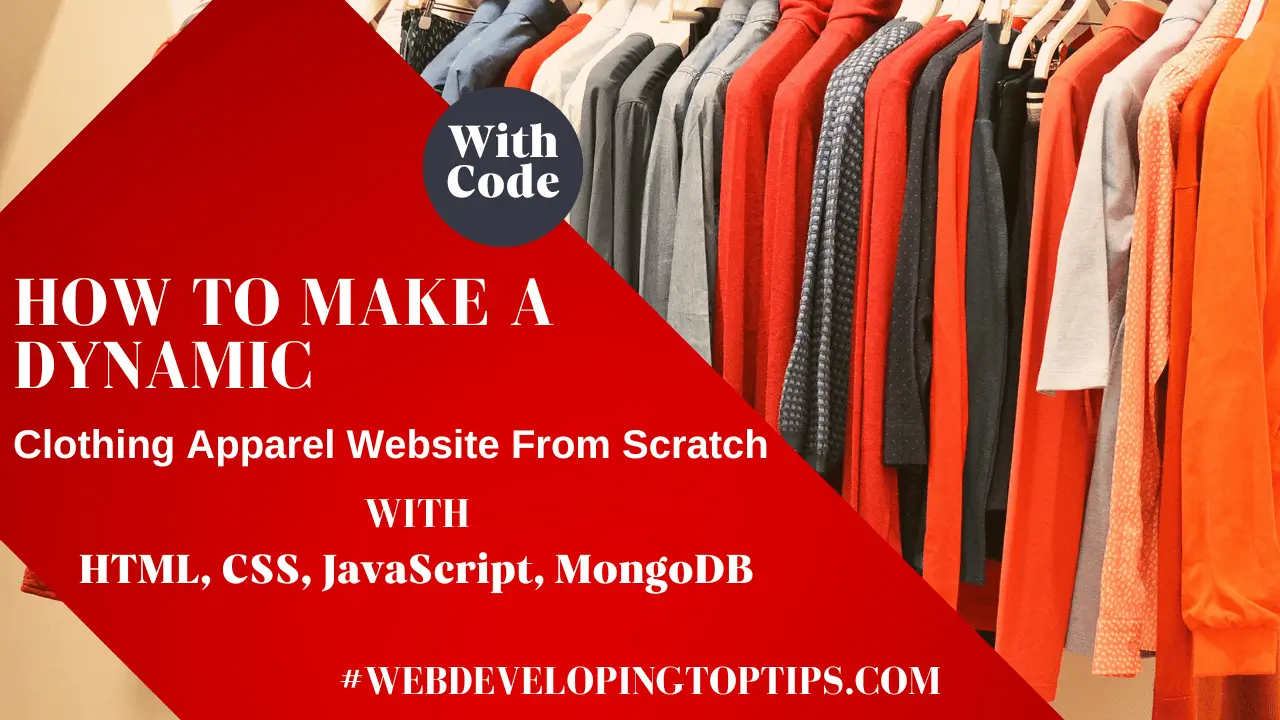How to make a dynamic clothing apparel website from scratch USING HTML, CSS, Javascript & Server-side technology:
Creating a complete dynamic shopping website with payment options, location, and managing product options with a server-side database requires a lot of code and can’t be covered entirely in a single response. However, I can guide you through the major steps and provide an outline with code snippets to get you started.
Please note that the following explanation assumes you have basic knowledge of HTML, CSS, and JavaScript, as well as some familiarity with server-side technologies like Node.js and databases like MongoDB.
Step 1: Set up the basic HTML structure
```html
<!DOCTYPE html>
<html lang="en">
<head>
<meta charset="UTF-8">
<meta name="viewport" content="width=device-width, initial-scale=1.0">
<title>Dynamic Shopping Website</title>
<link rel="stylesheet" href="styles.css">
</head>
<body>
<!-- Website content will be dynamically generated using JavaScript -->
<div id="app"></div>
<script src="script.js"></script>
</body>
</html>
```
Step 2: Create the CSS file (styles.css) with the black and white color palette.
```css
body {
background-color: #000;
color: #fff;
}
/* Add your specific styling for different components and layouts here */
```
Step 3: Set up the JavaScript file (script.js) to generate dynamic content.
```html
<!-- Inside script.js -->
const products = [
{
id: 1,
name: "Shirt",
colors: ["black", "white"],
sizes: ["S", "M", "L"],
price: 29.99,
imageUrl: "path/to/shirt-image.jpg",
inStock: true
},
// Add more products with similar properties
];
// Function to create a product card
function createProductCard(product) {
// Create the card element
const card = document.createElement("div");
card.classList.add("product-card");
// Add product details to the card
card.innerHTML = `
<img src="${product.imageUrl}" alt="${product.name}" class="product-image">
<h3>${product.name}</h3>
<p>Price: $${product.price}</p>
<label for="color">Color:</label>
<select id="color">
${product.colors.map(color => `<option value="${color}">${color}</option>`).join("")}
</select>
<label for="size">Size:</label>
<select id="size">
${product.sizes.map(size => `<option value="${size}">${size}</option>`).join("")}
</select>
${product.inStock ? '<button>Add to Cart</button>' : '<p>Out of Stock</p>'}
`;
return card;
}
// Function to display all products
function displayProducts() {
const app = document.getElementById("app");
products.forEach(product => {
app.appendChild(createProductCard(product));
});
}
// Call the displayProducts function to populate the website with products
displayProducts();
```
Step 4: Set up the server-side using Node.js and Express.js.
You’ll need to set up your server using Node.js and Express.js to handle user requests, process payments, and interact with the database (e.g., MongoDB). This step involves many details, and providing a full server-side implementation is beyond the scope of this response. However, I’ll give you an outline and some code snippets to guide you.
a) Install required dependencies:
```
npm init -y
npm install express body-parser mongoose
```
b) Set up the server (server.js):
```javascript
const express = require("express");
const bodyParser = require("body-parser");
const mongoose = require("mongoose");
const app = express();
// Set up middleware
app.use(bodyParser.json());
// Connect to MongoDB (You need to have MongoDB installed and running)
mongoose.connect("mongodb://localhost/shopping_website", {
useNewUrlParser: true,
useUnifiedTopology: true
})
.then(() => console.log("Connected to MongoDB"))
.catch(err => console.error("Error connecting to MongoDB:", err));
// Define the Product schema and model
const productSchema = new mongoose.Schema({
name: String,
colors: [String],
sizes: [String],
price: Number,
imageUrl: String,
inStock: Boolean
});
const Product = mongoose.model("Product", productSchema);
// Add API endpoints to handle CRUD operations for products
// These endpoints will handle adding, updating, and deleting products in the database.
// Example:
app.post("/api/products", (req, res) => {
const newProduct = req.body;
Product.create(newProduct, (err, product) => {
if (err) {
res.status(500).json({ error: "Failed to add product." });
} else {
res.status(201).json(product);
}
});
});
// Add more API endpoints for updating and deleting products
// Start the server
const port = 3000;
app.listen(port, () => {
console.log(`Server running on http://localhost:${port}`);
});
```
Please note that this is just an outline of the server-side code, and you’ll need to expand it to handle payment processing, authentication, and more.
Step 5: Integrate payment options
To handle payments, you can use payment gateways like Stripe or PayPal. Integrating these payment gateways involves detailed steps and varies based on the service you choose. Refer to the respective documentation for the detailed integration process.
Step 6: Add a store location
You can simply add the store location and contact information in the HTML or fetch it from the server if it needs to be dynamic.
```html
<!-- Inside the HTML body -->
<div id="store-location">
<h3>Store Location:</h3>
<p>123 Main Street, City, Country</p>
<p>Phone: +1 555-1234</p>
</div>
```
Step 7: Add “Out of Stock” option
This has already been implemented in the `createProductCard` function in Step 3, based on the `inStock` property of each product.
That covers the major steps to create a dynamic shopping website for clothing apparel. Keep in mind that building a complete e-commerce website is a complex task that requires careful planning, security considerations, and thorough testing. It’s essential to prioritize user experience, security, and scalability when developing a real-world application. Additionally, as technologies and best practices may evolve over time, it’s always a good idea to consult the latest resources and documentation to stay up-to-date with the latest trends.

